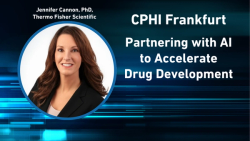
OR WAIT null SECS
- About Us
- Advertise
- Contact Us
- Editorial Info
- Editorial Advisory Board
- Do Not Sell My Personal Information
- Privacy Policy
- Terms and Conditions
© 2025 MJH Life Sciences™ , Pharmaceutical Technology - Pharma News and Development Insights. All rights reserved.
Advances in the Pharmaceutical Sciences
PTSM: Pharmaceutical Technology Sourcing and Management
As the pharmaceutical industry turns its efforts to biologic-based drugs and to more targeted delivery approaches, new tools are needed. Some recent developments are discussed.
The pharmaceutical sciences represent an evolving and highly dynamic field, and two overreaching trends show an increased effort to develop biologic-based drugs and creating more specific or targeted drug delivery techniques. Some recent developments are the development of spatial aggregation propensity for detecting protein aggregation, advances in drug-delivery technologies involving microencapsulation and nanocoatings, and tools to understand the risk of nanomaterials in drug-delivery systems.
Resolving protein aggregation
Researchers at the Massachusetts Institute of Technology (MIT) have developed a computer model to address the problem of short shelf-life for protein-based drugs due to aggregation. Most of the aggregation seen in antibodies is due to interactions between exposed hydrophobic regions of the proteins."Drugs are usually developed with the criteria of how effective they'll be, and how well they'll bind to whatever target they're supposed to bind," said Bernhardt Trout, professor of chemical engineering at MIT, in a June 2009 university press release. "The problem is there are all of these issues down the line that were never taken into account."
Trout and his colleagues, including Bernhard Helk of Novartis (Basel, Switzerland), developed a computer model that can help designers identify which parts of an antibody are most likely to attract other molecules, allowing them to alter the antibodies to prevent clumping, according to the MIT press release. Trout's new model, spatial aggregation propensity (SAP), offers a dynamic, three-dimensional simulation of antibody molecules. Unlike static representations such as those provided by X-ray crystallography, the new model can reveal hydrophobic regions and indicate how much of those regions are exposed when the molecule is in solution. The model also selects regions responsible for aggregation as opposed to selecting just single sites. Once the hydrophobic regions are identified, researchers can mutate the amino acids in those regions to decrease hydrophobicity and make the molecule more stable, according to the MIT release. Using the model, the team produced mutated antibodies with greatly enhanced stability (up to 50% more than the original antibodies), and the mutations had no adverse affect on their function. The technology could be applied to screening antibodies in the discovery phase (1).
Localized drug delivery
Bingyun Lim, assistant professor in the West Virginia University (WVU) Department of Orthopedics and director of the WVU Biomaterials, Bioengineering & Nanotechnology Laboratory, and his team developed two drug-delivery technologies—microcapsules and a nanocoating—for delivering the drug interleukin-12 (2).
The first technology involves the use of microcapsules that can be injected or potentially delivered in a fine-mist spray directly to the site of an injury. The second technology is a nanocoating of interleukin-12 applied directly to stents, pacemakers, pain pumps, artificial limbs or other biomedical device. This approach prolongs the half-life of the interleukin-12. In both methods, because the interleukin-12 is delivered locally rather than systematically, potential side effects are minimized (2).
Li drew his team from the WVU Department of Orthopedics, the WVU School of Pharmacy, the National Institute for Occupational Health and Safety, and the WVU Department of Microbiology, Immunology and Cell Biology. The team has spent the past four years in developing the technology.
Nanotechnology in pharmaceuticals
Nanotechnology offers great promise in the pharmaceutical industry, but the associated risk of nanomaterials is still unknown. Researchers at the University of California at Los Angeles (UCLA) and the California NanoSystems Institute (CNSI) recently published research that examined the nanoparticle-biological interface to identify the potential risks of engineered nanomaterials and to explore design methods that will lead to safer and more effective nanoparticles for use in a variety of treatments and products, according to an UCLA press release.
Nanoparticles can interact with proteins, membranes, cells, DNA, and organelles and create nanoparticle/biological interfaces that depend on colloidal forces and biophysicochemical interactions, which in turn can lead to the formation of protein coronas, particle wrapping, intracellular uptake, and biocatalytic processes with favorable or negative outcomes. Examining these interfaces allows predictive relationships between structure and activity to be developed based on nanomaterial properties such as size, shape, surface chemistry, roughness, and surface coatings (3).
"What we have established here is a blueprint that will serve to educate the first generation of nanobiologists," said Andre Nel, team leader and chief of the division of nanomedicine at the UCLA David Geffen School of Medicine and the California NanoSystems Institute, in a UCLA press release.
The work is important for achieving a better understanding of the interrelationship between intracellular activity and function of engineered nanomaterials, which is needed for nanoparticle drug-delivery systems. According to the UCLA release, much of the current knowledge derives from the study of tagged or labeled nanoparticles and their effects on cells after cellular uptake, without any detailed understanding of whether the outcomes of these interactions may be favorable or not.
References
1. B. Trout et al., “Design of Therapeutic Proteins with Enhanced Stability,” Proc. Natil. Acad. Sci. U.S.A. July 1, 2009, DOI 10.1073.
2. B. Li et al, “Multilayer Polypeptide Nanoscale Coatings Incorporating IK-12 for the Prevention of Biomedical Device-Associated Infections,” Biomaterials 30 (13), 2552–2558 (2009).
3. Andre Nel et al., “Understanding Biophysicochemical Interactions at the Nano–Bio Interface,” Nature Materials 8 (7), 543–557 (2009).



